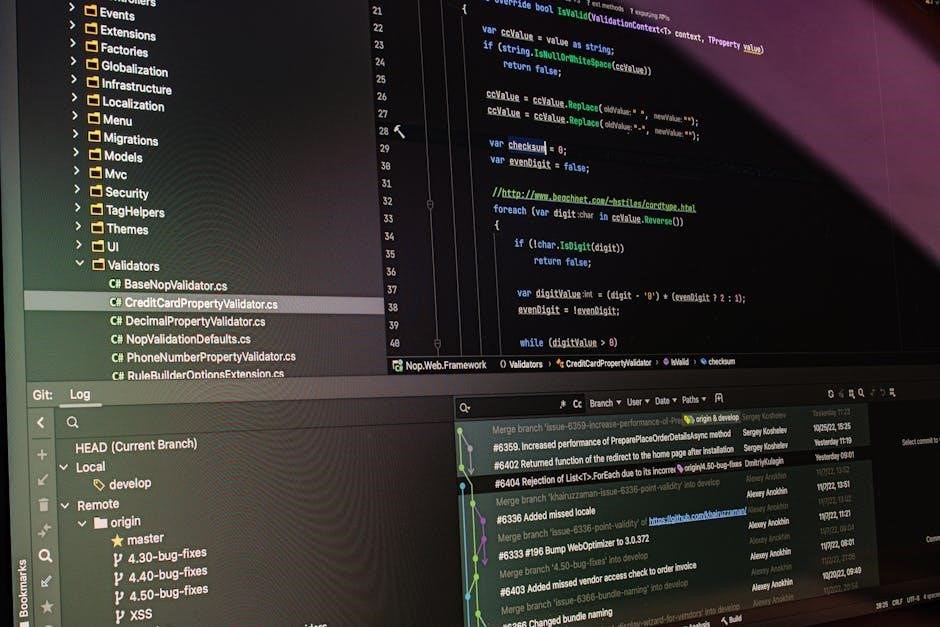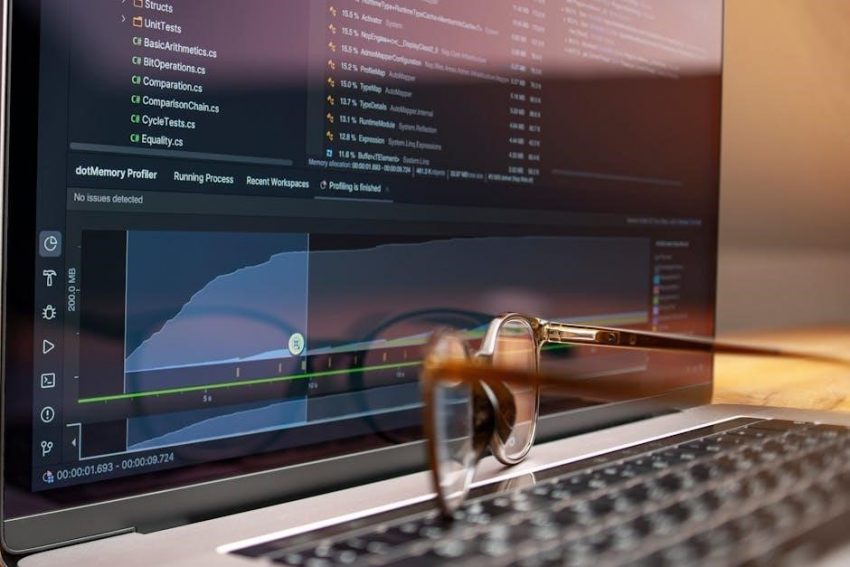CT-guided liver biopsies utilize imaging for precise needle placement, requiring specific CPT codes for accurate billing and coding in medical facilities.
What is a CT-Guided Liver Biopsy?
A CT-guided liver biopsy is a procedure where a small tissue sample is taken from the liver using a needle, guided by computed tomography (CT) scans. This imaging technique provides real-time visualization, ensuring accurate needle placement and minimizing risk to surrounding structures.
It’s performed to diagnose various liver conditions, including unexplained liver function tests, suspected tumors, or chronic hepatitis. The CT scan helps identify the optimal biopsy site, avoiding blood vessels and other critical areas. This minimally invasive procedure offers a valuable diagnostic tool for liver diseases, aiding in treatment planning and patient care.
Why is a CT-Guided Liver Biopsy Performed?
CT-guided liver biopsies are crucial for diagnosing unexplained liver abnormalities. Physicians perform them to investigate persistently elevated liver enzymes, assess the extent of liver damage from chronic diseases like hepatitis, and identify the cause of liver masses or tumors.
The procedure helps differentiate between benign and malignant growths, guiding treatment decisions. It’s also vital for evaluating suspected infections or inflammatory conditions affecting the liver. Accurate diagnosis through biopsy allows for tailored management plans, improving patient outcomes and overall liver health.
CPT Codes for Liver Biopsy – A Detailed Breakdown
CPT codes define the specific procedures performed during a CT-guided liver biopsy, ensuring proper reimbursement and accurate medical record documentation.

Primary CPT Code: 47061
CPT code 47061 represents the core procedure of a CT-guided liver biopsy. This code specifically covers the percutaneous approach, meaning the biopsy is obtained through the skin. It encompasses the entire process of using CT imaging to visualize the liver and guide the biopsy needle to the targeted area.
Accurate application of 47061 is crucial for appropriate billing. It’s important to note that this code doesn’t include the radiological supervision or interpretation, which are often billed separately. The procedure requires skilled radiologists and technicians to ensure safe and effective tissue sampling for diagnosis.
Image Guidance for Percutaneous Liver Biopsy
Image guidance, specifically utilizing CT scans, is paramount in percutaneous liver biopsies. It allows precise needle placement, minimizing risk to surrounding structures and maximizing diagnostic yield. The radiologist visualizes the liver in real-time, navigating the needle through the skin and into the targeted lesion or area of concern.
This guidance isn’t merely for visualization; it’s essential for patient safety. Without it, the risk of complications like bleeding or damage to adjacent organs significantly increases. Proper documentation of the imaging guidance used is vital for accurate coding and reimbursement, supporting the medical necessity of the procedure.
Secondary CPT Codes & Add-on Codes
Beyond the primary CPT code 47061, several secondary codes may apply to a CT-guided liver biopsy. CPT 47060 represents the biopsy itself, while 77002 accounts for radiological supervision and interpretation – a crucial component. These add-on codes accurately reflect the comprehensive nature of the procedure.
Correctly appending these codes ensures complete billing and appropriate reimbursement. Documentation must clearly support the services rendered to justify each code. Failing to include applicable secondary codes can lead to claim denials or underpayment, highlighting the importance of meticulous coding practices within the healthcare facility.
47060 ⏤ Biopsy of the Liver, Percutaneous
CPT code 47060 specifically describes a percutaneous liver biopsy – meaning the biopsy is obtained through the skin. This code is often used in conjunction with 47061 (image guidance) when a CT-guided liver biopsy is performed. It represents the core procedural component of tissue extraction for pathological examination.
Accurate application of 47060 requires clear documentation detailing the percutaneous approach. It’s essential to differentiate this from other biopsy methods. Proper coding ensures appropriate reimbursement for the physician’s work in obtaining the liver tissue sample, crucial for diagnosis and treatment planning.
77002 ‒ Radiological Supervision and Interpretation
CPT code 77002 signifies the radiologist’s crucial role in a CT-guided liver biopsy. This code covers the professional component of radiological supervision and interpretation of the imaging guidance used during the procedure. It acknowledges the expertise required to precisely guide the biopsy needle to the target area within the liver, ensuring sample accuracy.
Billing 77002 necessitates a radiologist’s direct involvement and a comprehensive report detailing the imaging findings and guidance provided. This code is frequently reported alongside 47061, reflecting the collaborative effort between the interventionalist and radiologist for optimal patient care and diagnostic results.
Understanding the Components of the Procedure
CT-guided liver biopsies involve detailed imaging, specialized needles, and careful patient preparation – all essential for accurate diagnosis and proper CPT coding.

Imaging Modality: CT Scan
CT scans are crucial for CT-guided liver biopsies, providing real-time visualization of the liver and surrounding structures. This allows the radiologist to precisely guide the biopsy needle to the targeted area, minimizing risk to nearby organs and maximizing diagnostic yield. The CT imaging helps identify optimal biopsy pathways, avoiding blood vessels and other obstructions.
Accurate image guidance is paramount for successful biopsies and correct CPT code assignment (like 47061). Detailed CT imaging protocols are followed to ensure high-quality images, essential for both the procedure and comprehensive radiology reports supporting billing.
Role of CT in Guiding the Biopsy
CT guidance during a liver biopsy ensures accurate needle placement, vital for obtaining a representative tissue sample. The radiologist uses real-time CT imaging to navigate the needle through the liver, avoiding vessels and lesions. This minimizes complications like bleeding and maximizes diagnostic accuracy, directly impacting CPT code selection (e.g., 47061 for image guidance).
Without CT, biopsies would be significantly less precise and riskier. The CT scan confirms the needle’s position before tissue acquisition, ensuring the targeted area is sampled. Proper documentation of the CT guidance is crucial for accurate billing and coding.

Biopsy Needle & Technique
Liver biopsies typically employ a percutaneous approach, utilizing needles ranging from fine-gauge needles for aspiration to larger core biopsy needles. The choice depends on the tissue needed for analysis, influencing CPT code assignment. The technique involves inserting the needle through the skin, guided by CT imaging, to obtain a liver tissue sample.
Real-time visualization is key, allowing the radiologist to steer the needle safely. Multiple passes may be needed. Proper needle handling and technique are vital to minimize patient discomfort and complications, supporting accurate coding and reimbursement claims.
Types of Needles Used
CT-guided liver biopsies utilize various needle types. Fine-needle aspiration (FNA) needles collect cells for cytologic examination, while core biopsy needles obtain tissue for histologic analysis – impacting CPT code selection. Commonly used are the Hakko needle and the coaxial needle systems. Coaxial systems allow for larger core samples with greater accuracy;
The needle gauge influences sample size and potential complications. Radiologists choose based on diagnostic needs and patient factors. Proper documentation of the needle type used is crucial for accurate billing and supporting the chosen CPT code for the procedure.

Patient Preparation
CT-guided liver biopsy preparation is vital for safety and diagnostic quality, influencing CPT code accuracy. Patients typically require fasting for at least six hours before the procedure to minimize aspiration risk. Coagulation studies (PT/INR, platelets) are essential to assess bleeding risk; adjustments may be needed.
Patients should inform their physician about all medications, especially blood thinners. Allergy assessments are crucial. Clear communication regarding pre- and post-biopsy instructions ensures patient compliance and reduces complications, supporting proper CPT code assignment and reimbursement.
Pre-Biopsy Instructions & Fasting
CT-guided liver biopsy success relies on meticulous patient preparation, directly impacting CPT code claim accuracy; Patients are typically instructed to abstain from food and liquids for a minimum of six hours prior to the procedure. This fasting requirement minimizes the risk of aspiration during the biopsy process.
Medication review is critical; anticoagulants may need temporary cessation. Patients must disclose all allergies. Detailed written instructions, including post-procedure care, are provided. Adherence to these guidelines ensures optimal imaging and reduces complications, supporting appropriate CPT code selection.
Billing and Coding Considerations
CPT codes for a CT-guided liver biopsy require careful attention to detail, including proper modifier usage and comprehensive documentation for accurate reimbursement.
Modifier Usage
Modifiers are crucial when coding a CT-guided liver biopsy. The -59 modifier (Distinct Procedural Service) is frequently appended when multiple procedures are performed during the same session. This indicates that the biopsy wasn’t a planned component of another service, ensuring appropriate reimbursement.
For instance, if imaging guidance and the biopsy itself are billed separately, -59 clarifies they are distinct services. Accurate documentation supporting the need for the modifier is essential to avoid claim denials. Improper modifier use can lead to downcoding or rejection, impacting revenue cycle management.
-59 Modifier (Distinct Procedural Service)
The -59 modifier is vital when reporting a CT-guided liver biopsy alongside imaging guidance (like a CT scan). It signifies that the biopsy is a separate, distinct procedural service from the imaging performed. Without -59, payers may consider the biopsy included in the imaging code, leading to claim denials.
Proper use requires clear documentation demonstrating the biopsy wasn’t incidental to the CT scan. This includes a specific indication for the biopsy, separate documentation of the procedure, and distinct physician work. Accurate application of -59 ensures appropriate reimbursement for both services.
Documentation Requirements
Comprehensive documentation is crucial for successful CPT code billing of a CT-guided liver biopsy. A detailed radiology report must clearly outline the procedure’s medical necessity, including the clinical indication for the biopsy and pre-existing conditions. The report should specify the CT guidance used, needle type, number of core samples obtained, and any complications encountered.
Furthermore, documentation must support the use of any modifiers (like -59) and demonstrate distinct procedural services. Accurate coding relies on a complete record reflecting the entire process, from patient preparation to post-biopsy monitoring.
Detailed Radiology Report
The radiology report for a CT-guided liver biopsy is paramount for proper CPT code assignment. It must meticulously detail the imaging findings that prompted the biopsy, the specific CT technique employed for guidance, and the precise location(s) biopsied within the liver.
The report should also document the needle gauge used, the number of core samples obtained, and any immediate post-procedural observations. Any complications, such as bleeding or pain, must be clearly noted. A comprehensive report justifies medical necessity and supports accurate billing claims.

Potential Complications & Related CPT Codes
CT-guided liver biopsies carry risks like bleeding, infection, and pain; related CPT codes, such as 10060 for wound care, may be necessary.

Common Complications
CT-guided liver biopsies, while generally safe, aren’t without potential complications. Bleeding is a recognized risk, ranging from minor hematoma formation to, rarely, significant hemorrhage requiring intervention. Infection, though uncommon with sterile techniques, remains a possibility at the biopsy site.
Patients may experience post-procedure pain, typically managed with analgesics. Less frequent complications include bile leakage, injury to adjacent organs (like the gallbladder or bowel), and pneumothorax if the diaphragm is inadvertently punctured. Careful patient selection, meticulous technique, and close post-procedural monitoring are crucial to minimize these risks.
Bleeding, Infection, Pain
Bleeding is the most common complication post-CT-guided liver biopsy, often presenting as localized hematoma. Infection, though rare with sterile protocols, requires prompt antibiotic intervention if suspected – signs include fever and increasing pain.
Pain at the biopsy site is typical, usually mild and controlled with over-the-counter analgesics. More severe or persistent pain warrants investigation. Other, less frequent issues include bile leakage or injury to nearby organs. Vigilant monitoring and patient education regarding potential symptoms are essential for early detection and management.
CPT Codes for Managing Complications (If Applicable)
If a CT-guided liver biopsy leads to complications, additional CPT codes may be necessary. 10060 (Simple Wound Care) applies for minor bleeding requiring dressing changes. More significant bleeding needing intervention could involve codes for embolization or surgical repair, depending on severity.
Infection management necessitates codes for antibiotic administration and related office visits. Severe pain might require procedural coding for nerve blocks. Accurate documentation linking the complication directly to the biopsy is crucial for appropriate billing and reimbursement, ensuring compliance with payer guidelines.
10060 ⏤ Simple Wound Care
CPT code 10060 represents simple wound care, frequently utilized post CT-guided liver biopsy if minor bleeding occurs at the insertion site. This includes cleaning the wound, applying a sterile dressing, and patient education regarding care. It’s reported when the care doesn’t necessitate more complex wound management.
Appropriate use requires documentation detailing the wound’s size, characteristics, and the specific care provided. 10060 is typically billed once per lesion, per day. It’s essential to differentiate between simple wound care and more extensive procedures requiring different CPT codes, ensuring accurate claim submission.

Reimbursement & Payer Policies
Reimbursement for CT-guided liver biopsies varies; Medicare and private insurers have specific coding and coverage rules impacting claim approvals.
Medicare Guidelines
Medicare generally covers CT-guided liver biopsies when deemed medically necessary for diagnosis or management of liver disease. Proper documentation supporting medical necessity is crucial for claim approval. CPT codes 47061 and potentially 47060, alongside 77002 for radiological supervision, must be accurately reported.
Local Coverage Determinations (LCDs) may exist, outlining specific criteria for coverage in certain regions. Adherence to these LCDs is essential. Medicare also emphasizes correct modifier usage, like -59, when multiple procedures are performed during the same encounter. Failure to comply with these guidelines can lead to claim denials or reduced reimbursement.
Coverage and Coding Rules
Coverage for a CT-guided liver biopsy hinges on medical necessity, requiring documented clinical indications like unexplained liver function tests or suspected malignancy. Coding accuracy is paramount; CPT code 47061 (image guidance) is primary, often paired with 47060 (biopsy) and 77002 (radiological supervision).
Medicare and most payers require detailed documentation in the radiology report justifying the procedure. Correct modifier application, particularly -59 for distinct services, is vital. Incorrect coding or insufficient documentation can result in claim denials. Understanding payer-specific policies is crucial for successful reimbursement of the CT-guided liver biopsy.
Private Insurance Variations
Private insurance policies demonstrate significant variability regarding CT-guided liver biopsy coding and coverage. Some insurers may necessitate pre-authorization, even with appropriate CPT codes (47061, 47060, 77002).
Certain plans might have specific requirements for the radiologist’s credentials or the imaging center’s accreditation. Detailed documentation supporting medical necessity is consistently essential. Denials are common if the submitted information doesn’t align with the insurer’s specific guidelines. Therefore, proactive verification of payer-specific policies before performing the procedure is highly recommended for optimal reimbursement.
Payer-Specific Policies
Payer-specific policies drastically impact CT-guided liver biopsy CPT code reimbursement. Many private insurers and Medicare have unique Local Coverage Determinations (LCDs). These LCDs outline acceptable indications, required documentation, and potentially covered CPT codes – 47061, 47060, and 77002.
Some payers may bundle imaging guidance (77002) into the biopsy code (47061), while others reimburse separately. Thoroughly researching each payer’s guidelines before the procedure is crucial. Failure to adhere to these policies often results in claim denials or reduced payments, necessitating appeals and further administrative burden;
Future Trends in Liver Biopsy & Coding
Advancements in CT and imaging technology promise improved accuracy, potentially influencing CPT code utilization for CT-guided liver biopsies and related procedures.

Advancements in Imaging Technology
Cutting-edge imaging is revolutionizing CT-guided liver biopsies, enhancing precision and safety. Newer CT scanners offer faster acquisition times and reduced radiation exposure, benefiting patients significantly. Real-time imaging guidance allows interventional radiologists to visualize the needle path and target lesion with greater accuracy, minimizing the risk of complications.
Furthermore, advanced software and image processing techniques improve lesion characterization and differentiation, aiding in biopsy target selection. These technological leaps directly impact CPT code selection, potentially leading to more specific codes reflecting the complexity and accuracy of the procedure. Improved visualization also supports less invasive techniques, potentially altering future coding guidelines.
Improved Accuracy & Safety
Advancements in CT technology directly translate to improved accuracy and enhanced patient safety during CT-guided liver biopsies. Precise image guidance minimizes the risk of puncturing unintended structures, like blood vessels or bile ducts, reducing post-procedural complications.
Smaller needle sizes, coupled with real-time visualization, allow for less traumatic biopsies, leading to quicker recovery times. This increased precision can also influence CPT code assignment, potentially justifying higher-level codes for complex cases. Safer procedures contribute to reduced healthcare costs associated with managing complications, ultimately benefiting both patients and the healthcare system.

Potential Changes to CPT Coding
CPT coding for CT-guided liver biopsies remains subject to periodic updates and revisions by the American Medical Association (AMA). These changes often reflect advancements in imaging techniques and biopsy procedures. Potential modifications could involve new codes for specific needle types or imaging protocols, impacting reimbursement rates.
Staying current with CPT code changes is crucial for accurate billing. The introduction of artificial intelligence (AI) in image analysis may necessitate new coding guidelines. Monitoring industry publications and attending coding workshops will ensure compliance and prevent claim denials related to liver biopsy procedures.
Updates and Revisions
CPT coding undergoes regular updates, typically annually, to reflect evolving medical practices. For CT-guided liver biopsies, revisions may address image guidance advancements or refined procedural techniques. Staying informed about these changes is vital for accurate claim submissions and avoiding denials.
The AMA releases new CPT codes and modifies existing ones, often based on recommendations from specialty societies. Monitoring these updates ensures coders utilize the most current guidelines. Resources like the AMA website and coding newsletters provide crucial information regarding liver biopsy procedure coding, impacting reimbursement and compliance.

